Last-Minute NYC Holiday Gift Guide 🎁
We’ve created a holiday gift guide with presents for the intrepid New Yorker that should arrive just in time—


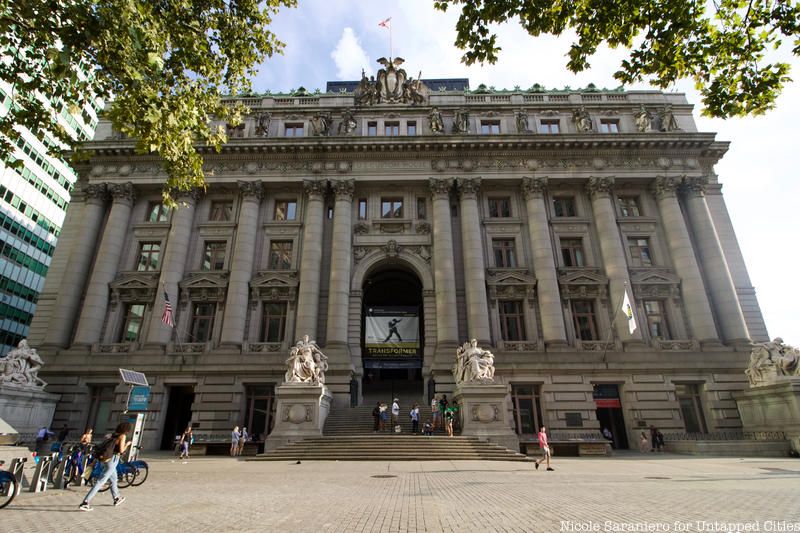
The extravagant structure that now houses the Smithsonian’s National Museum of the American Indian once served as as the center for duty collection operations for the Port of New York. As the Alexander Hamilton U.S. Customs house, the building was an epicenter of commerce until 1974 when operations were moved to the World Trade Center. The building is a giant Beaux-Arts treasure trove of artistic and architectural work that was completed in 1907. In addition to the museum that inhabits the building today, you will also find offices of the naval coast guard, a U.S. bankruptcy Court, the east coast National Archives, and a U.S. Customs and Border Protection office. Standing now as a national landmark, the structure has come to embody over 400 years of New York City history.

Image from Library of Congress. Bowling Green before the Customs House was built.
The Museum of the American Indian is located directly across from Bowling Green in lower Manhattan on top of what was once the site of Fort Amsterdam. The fort was built in 1626 to defend the Dutch controlled city of New Amsterdam. After the Revolutionary War, the fort was demolished. In 1790, a structure intended to serve as the executive mansion of President George Washington was built at the site, but Washington never lived there. Instead, when the federal government moved to Philadelphia, the Government House became the home of the state governor. This structure was demolished in 1815 when the land was sold to the public. Before construction of the Customs House began in 1902, steamship offices occupied the land.
It is a fitting turn of events that a museum celebrating and honoring the history of Native American cultures now occupies the space where colonial rule in New York began. The Museum of the Native American is free and open to the public daily. Exhibits currently on display include Transformer, an art exhibit featuring the work of ten artist who all use electricity and a variety of new media to explore “their place in and between traditional and dominant cultures,” and Taíno, a look at native heritage and identity in the Caribbean.
Learn more about New York City’s colonial history on our Remnants of Dutch New Amsterdam Walking Tour!
BOOK NOW

The selection of Minnesota architect Cass Gilbert as the architect for the Custom House was one embroiled in politics. The Tarsney Act of 1893 granted the secretary of the treasury of the U.S. the ability to use private architects to design federal buildings. In 1899, twenty firms were invited to compete for the U.S. Custom House commission. This was the first major competition under the new act and the Custom House would be the fourth federal building completed after its implementation. Each architecture firm that entered had from June until September to come up with a proposal and could suggest two jurors for the panel that would judge their designs. Both of Cass Gilbert’s suggestions were approved and Supervising Architect of the Treasury, James Knox Taylor, who was also on the jury, was Gilbert’s former partner in St. Paul, Minnesota.
The competition ended in a draw between Gilbert’s grandiose Beaux-Arts design and a proposal by Carrere & Hastings, the firm that had just been granted the commission for the New York Public Library. Gilbert refused to hear any suggestion of collaboration and after two days of private meetings among the jurors, he was selected as the winner — much to the chagrin of the New York based architects who were resentful of this newly arrived westerner. Many argued that Knox and Gilbert’s relationship influenced the decision and some members of the Republican state machine even went so far as to take their grievances to President McKinley! In the end, Treasury Secretary Lyman J. Gage affirmed Gilbert’s selection.
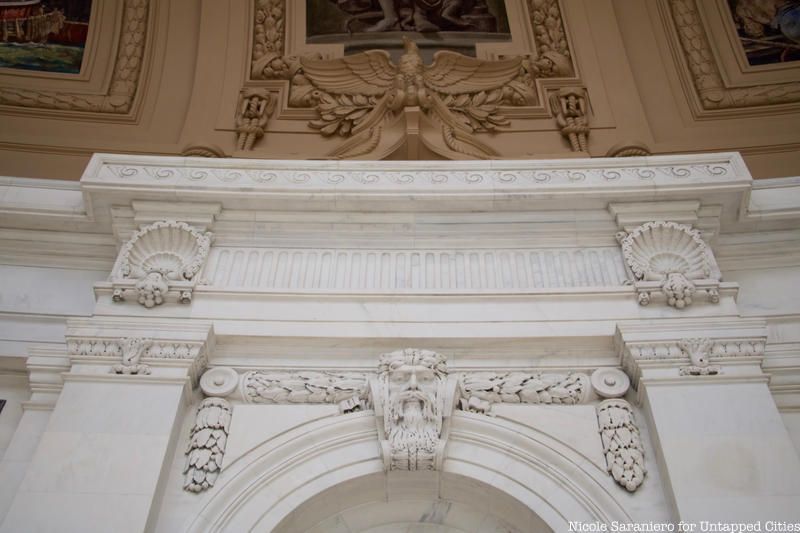
The museum is 450,000 square feet large and covers three blocks. The two themes that Gilbert carried throughout the design, as an homage to the purpose of the building, were government and seafaring. Federal iconography such as eagles can be spotted throughout the intricate detailing, as well as tons of nautical imagery from dolphin-shaped door handles to seashells and the face of Poseidon.
Cass Gilbert made a sizable impact on the built environment of New York City however, designing such landmarks as the Woolworth Building, the Thurgood Marshall Courthouse, the Brooklyn Army Terminal and more.
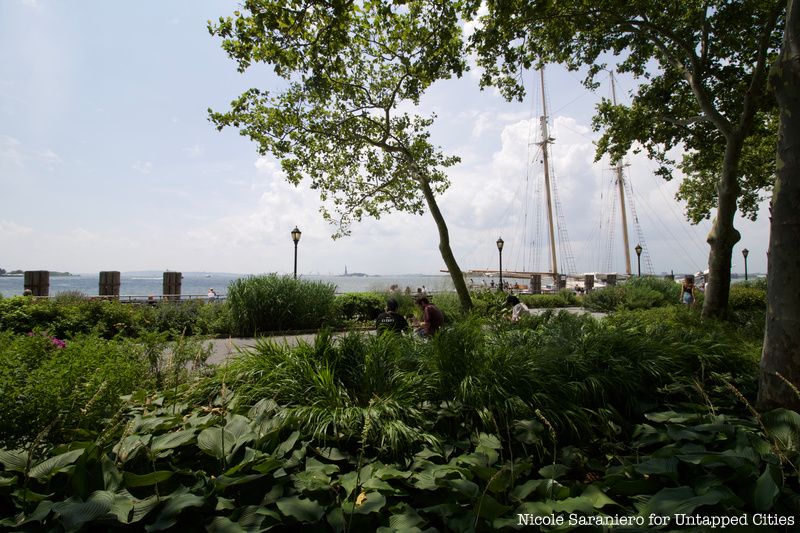
Unlike most Custom Houses which would logically face the port where incoming ships would arrive at, the Alexander Hamilton Custom House backs it. The front of the building should have been on Bridge Street facing where the port would have been at Pearl Street and the Battery. However, Gilbert wanted those coming into New York to be impressed before they even entered his building. By putting the entrance of the Custom House on the Bowling Green side, those who needed to enter would see Broadway and the hustle and bustle of New York City.
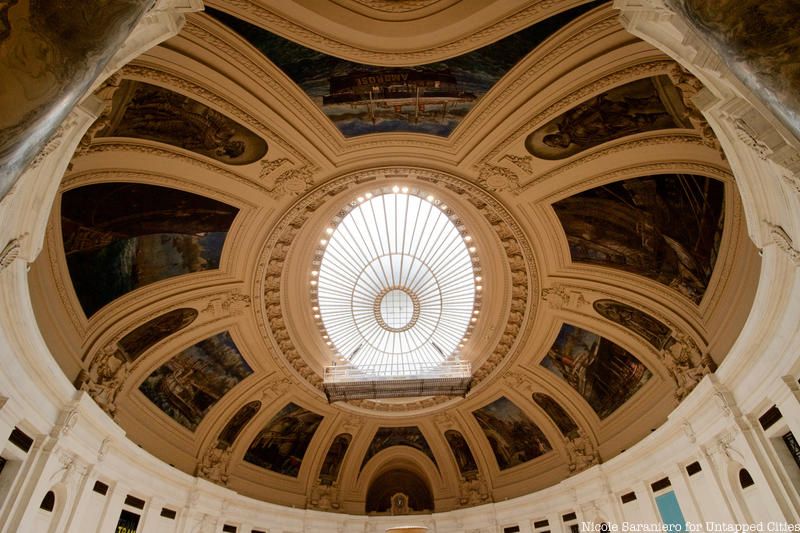
Mastercraftsman Rafael Guastavino left his mark all over New York City, from City Hall subway station and Grand Central Terminal to the Prospect Park Boathouse. Guastavino’s work appears in the museum as a giant domed ceiling in the massive rotunda under which workers once sat at the large marble counter to collect tariffs. The skylight that is supported by the dome weighs 140 tons. The ceiling is made entirely of plaster and tile using the famous Guastavino method.
During World War II, the rotunda skylight was painted over for safety reasons. This was also the case with the illuminated windows of the original Penn Station as well the Ansonia Hotel, and City Hall subway station.
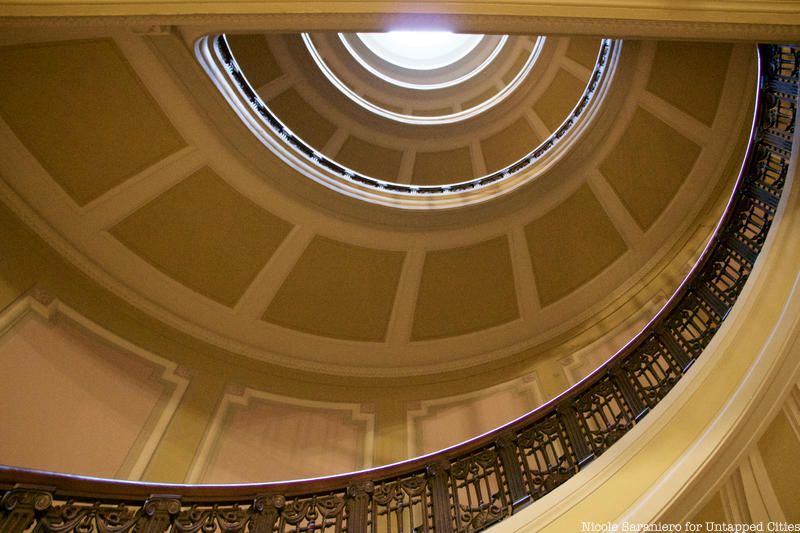
The two staircases on either end of the lobby were also constructed by the Guastavino Fireproof Construction Company using the same method employed in the construction of the rotunda.
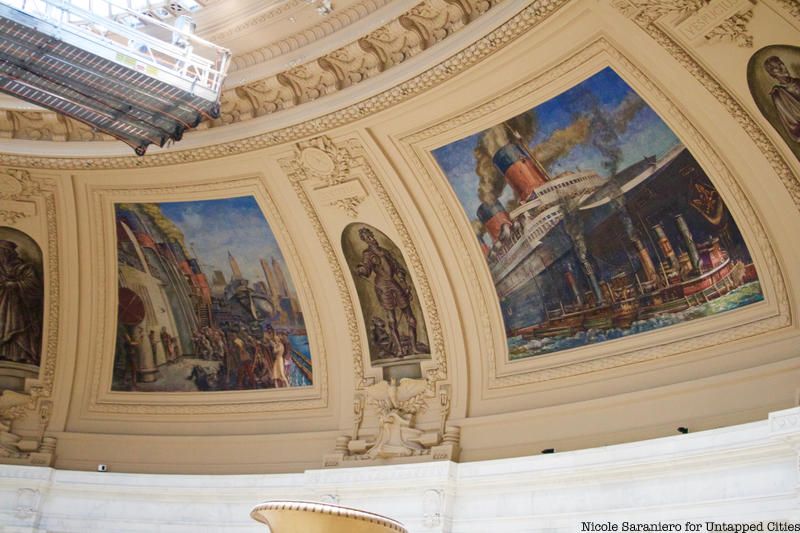
Encircling the Guastavino rotunda, spread across 2,300 square feet of space, are giant murals by Reginald Marsh. These murals were not part of the original design for the building. When the interior of the Custom House was completed in 1909, the panels where the murals are located now were bare. The murals were commissioned as part of the Treasury Relief Art Project, an offspring of the W.P.A. 1937. It took a team of eight people only three months to complete the pieces. Marsh paid his assistants $1.50 an hour and took only ninety cents an hour for himself. The entire project cost $3,000, surely much less then just one of the paintings is worth today. The murals depict port scenes of various ships arriving and departing. In between these scenes are Marsh’s interpretation of famous early explorers like Henry Hudson and Giovanni da Verrazzano.
In the 1990s, an attempt was made to clean the murals and bring back the vibrancy of their color. Over time, much like other historic interiors around the city, smoke from cigarettes and cigars created layers of grime. However, the process proved to be too expensive and all that was cleaned were two small corners of two of the murals.
Another fun fact, one of the ships featured in the murals, the Lightship Ambrose, can be seen at the South Street Seaport.
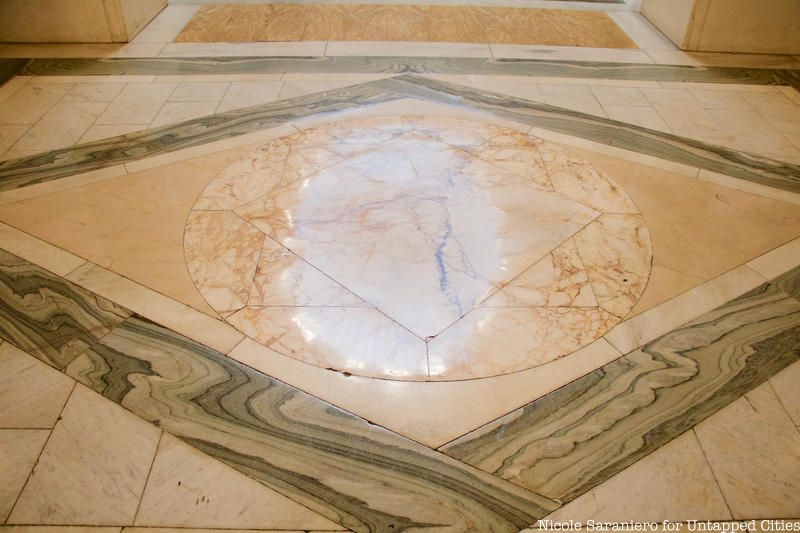
The exterior of the museum is made of limestone, granite and Tennessee marble and the interior is covered in marble from all over the world. The floor contains pieces of orange marble from Italy. The walls have pieces of stone from various states including Maryland, Alaska, Georgia, and white cloud marble from Vermont and fourteen giant marble columns are made of stone from Switzerland. The columns and inlays of Swiss marble are some of the last pieces of their kind as there is no more of it in world!
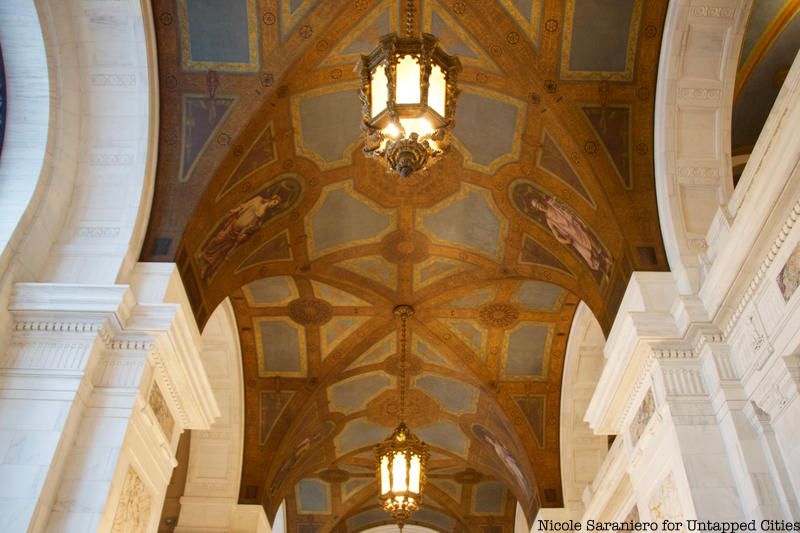
When you first walk into the museum, before you get to the magnificent Guastavino rotunda, there is an equally stunning vaulted ceiling in the entranceway. This ceiling was created using fourteen layers of specialized paint. The result of these thick layers is a finished product that looks and feels like embossed leather. The complexity of the painted ceiling was realized when preparations were being made for repairs. Workers discovered just how unique the composition of the paint was.
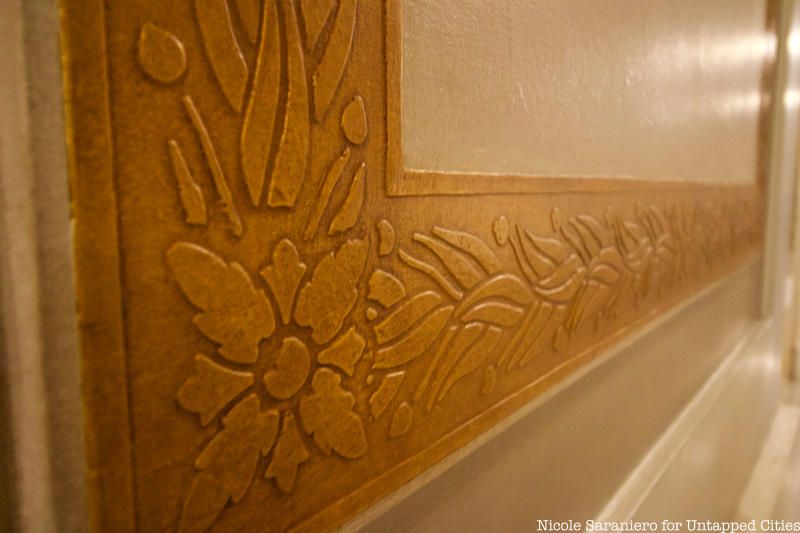
Another secret about the entranceway: the chandeliers are made of wood! Copper and brass would have made the fixtures too heavy, so they are painted to mimic the look of metal.
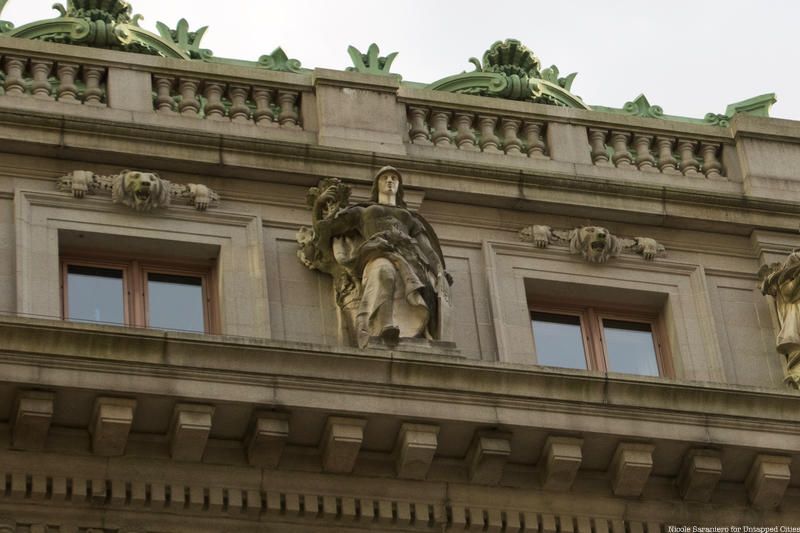
The outside of the museum is adorned with sculptures created by artist from all over the world. The four large sculptures that flank the main staircase were designed by Daniel Chester French who is known for his work on the Lincoln Memorial in Washington, D.C. These four figures represent the four continents of Asia, America, Europe and Africa.
A series of smaller statues line the top of the front facade and were created by various artists to represent the twelve commercial centers of the ancient and modern worlds. Among the ranks are representations of Greece, Rome, Venice, Spain, England, France, and Belgium. Belgium may seem out of place on this list since the original subject of the sculpture was Germany. When attitudes towards Germany turned cold during World War I, the statue, third in from the right, was ordered to be changed.
The original sculptor was German-American Albert Jaegers. His design was of a female figure draped with chain mail and a leather doublet embossed with the imperial eagle of Germany. She was resting on a shield bearing “W II” for Kaiser Wilhelm II. When changes were requested in 1918, Jeaggers suggested just putting the statue in storage. Architect Cass Gilbert called upon sculptor Attillio Piccirilli – whose family had carved French’s “Four Continents” – to carry out the necessary changes. Piccirilli replaced the German eagle with a lion in a simplified version of the coat of arms of Belgium, replaced the Kaiser’s monogram with “Belgium” and altered the figure’s helmet.
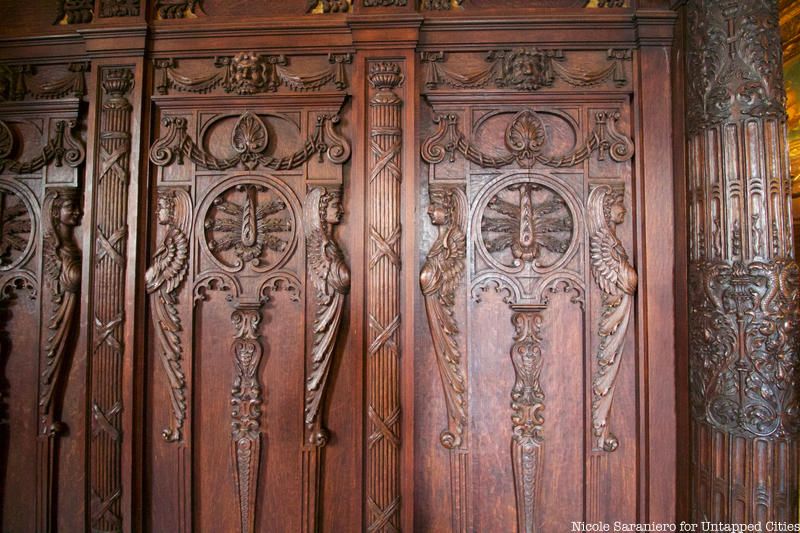
If you haven’t already been impressed by the entranceway and rotunda, the most elaborate room in the museum might do the trick. The collector’s office has many notable features including a gilded coffered ceiling, carved stone fireplace and murals by Elmer Ellsworth Garnsey. One of the most special features however is the oak panelling designed by Cass Gilbert and carved by Tiffany Studios. Before his foray into glass, which would come to adorn many iconic New York City locations, Louis Comfort Tiffany had a woodworking studio in Brooklyn.
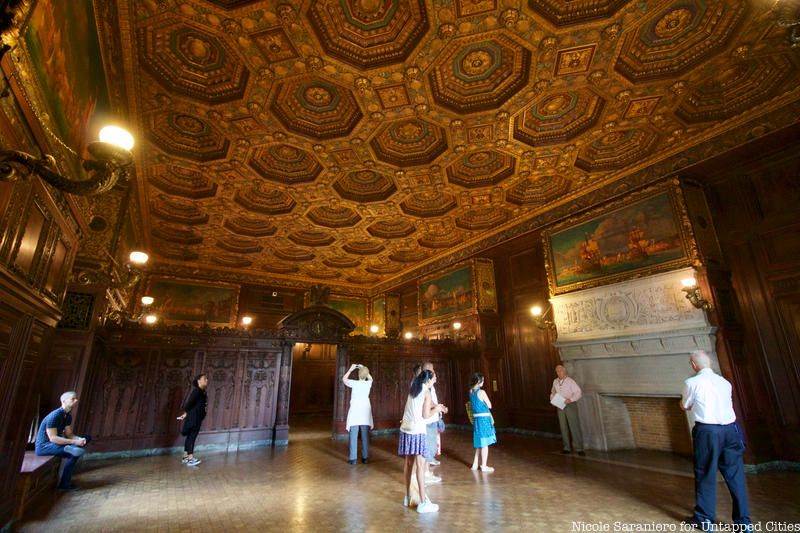
This spectacular space has appeared on screen in movies like Ghostbusters, Black Swan, and Working Girl. While impressive in its design, this fancy office was mostly for show. The collector did the real work at a less extravagant office nearby, accessed via a door and short hallway.
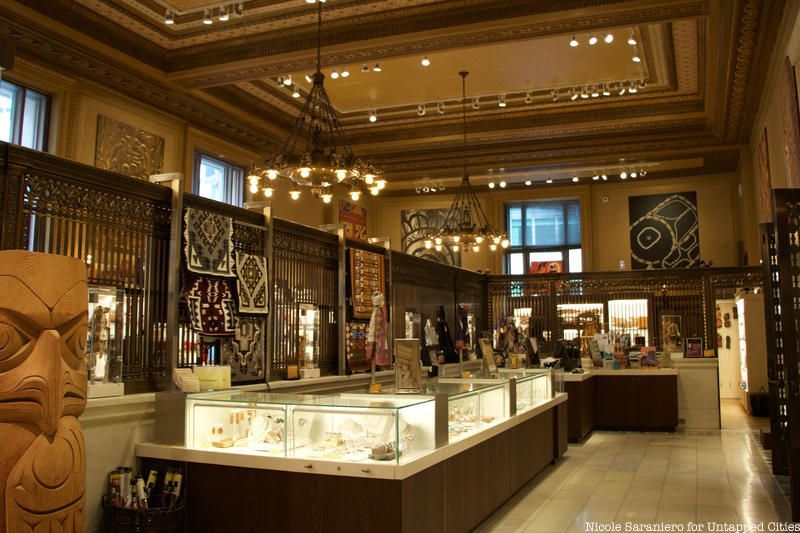
Before the implementation of income and corporate taxes, the government relied heavily on tariffs on imported goods for revenue. Money coming in through the New York Custom House alone, at one point, accounted for 50% to 80% of the total federal revenue. The $7 million cost of construction for the building was made back in only one month. What is now the new gift shop of the Smithsonian’s Museum of the American Indian used to be the cashier’s office where tariffs were collected and millions of dollars in international currency would flow through. You can still see the original metal cages, and hidden behind some storage, the original vault where money from all over the world would be stored.
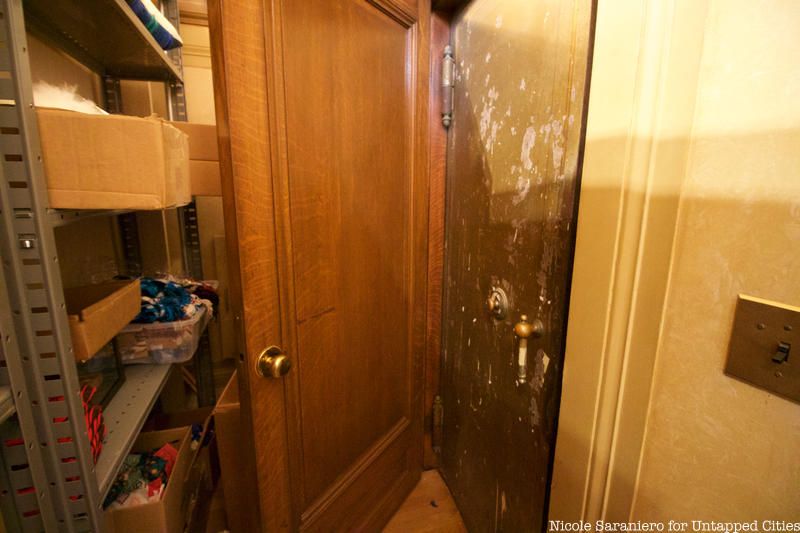
Next, check out The Top 10 Secrets of The Federal Reserve Bank of New York
Subscribe to our newsletter